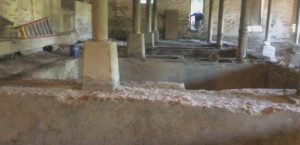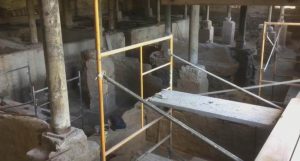Buffalo Trace Distillery unearthed remnants of the O.F.C. Distillery dating to 1873 while renovating a building in Frankfort, Kentucky, USA. The discovery was made as the long used storage building was prepared for renovation.

While renovating an old building for event space workers unearthed the foundations of distilleries. The building is located near the Kentucky River and the works included strengthening one of the walls. The workers had to dig into the floor and as they did, the discovery was made.

Archaeologists working at the site discovered brick pillars and remnants of walls, a cistern, and a row of brick structures that turned to be intact 11000-gallon fermenting tanks built by Col. E. H. Taylor for one of the versions of his O.F.C. Distillery. The first, simple O.F.C. Distillery, was built on the site by Taylor in 1869. It was torn down in 1873 and rebuilt bigger. Instead of tearing down everything and starting over, Taylor rebuilt on top. This second distillery was destroyed by fire caused by lightning in 1882.

The eight vats are constructed of brick, laid in English cement. The base is almost 2 metres below the level of the floor, and the tops over 3 metres below the ceiling. They are first lined with the first quality of Portland cement, and this again lined with the best sheet copper, manufactured especially for the purpose. The distillery was used until the 1950s, when the contemporary owner called Schenley decommissioned it. The copper was stripped out and sold, and the tops of the fermenting tanks were knocked down inside to flatten them to floor level and then were filled in with rubble. After archaeological works and restoration are completed the site will become an archaeological exhibit for visitors at the historic distillery.
(after Lexington Herald Leader)